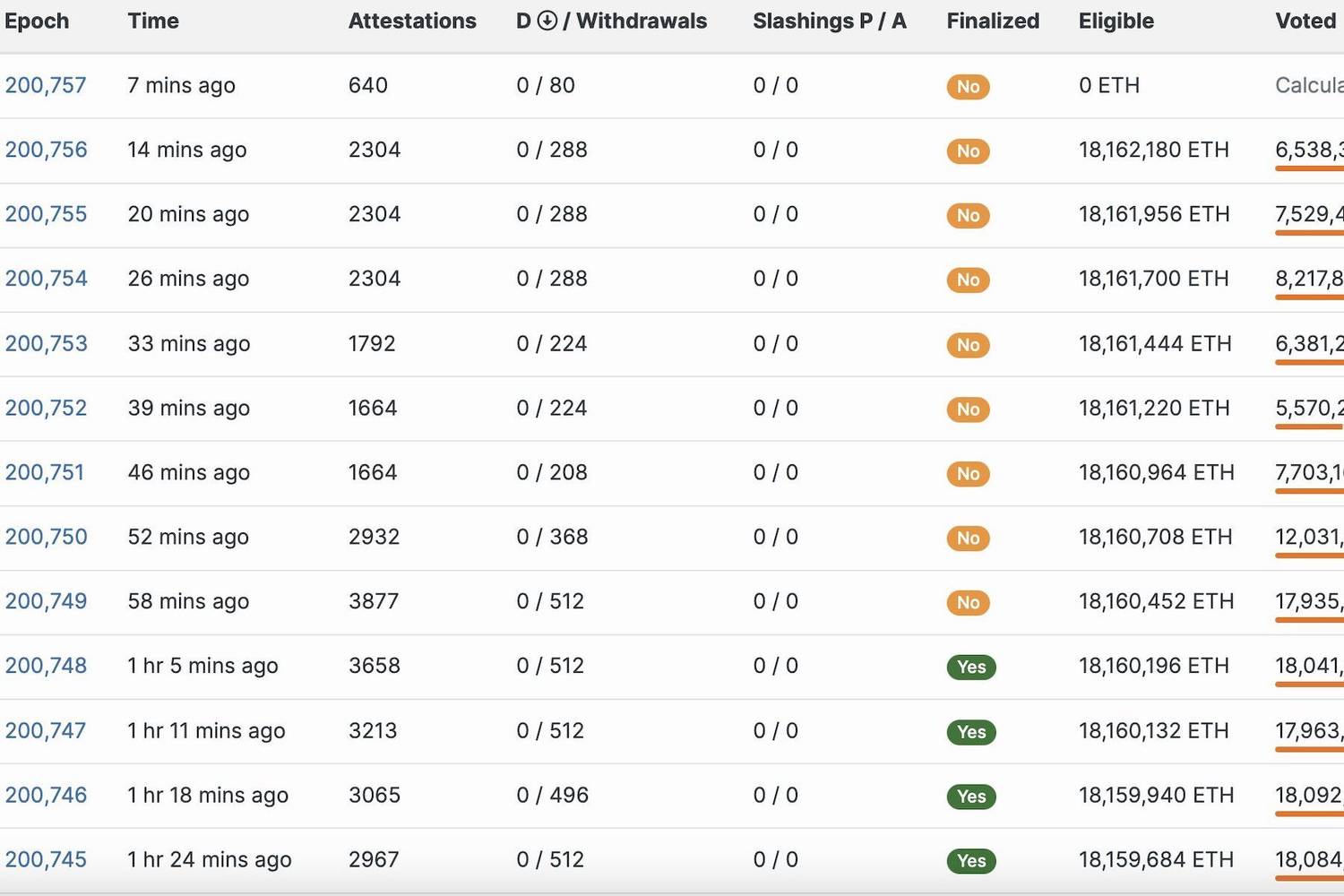
Ethereum Clients Release Another Update to Address Second Outage
Following a series of recent outages on the Ethereum network, Ethereum consensus clients Prysm and Teku have released another update to address the Beacon Chain's second finality issues. Despite previously releasing patches, they did not prevent the Beacon Chain's second outage.
- Published:
- Edited:
Following a series of recent outages on the Ethereum network, Ethereum consensus clients Prysm and Teku have released another update to address the Beacon Chain's second finality issues. These incidents, which saw the network struggle with finality issues twice within 24 hours, first for 25 minutes and then for over an hour, raised concerns among stakers and developers. Despite previously releasing patches, they did not prevent the Beacon Chain's second outage.
In a typical scenario, it takes about 15 minutes for an Ethereum block to finalize. "Finality" refers to the guarantee that a block cannot be modified or removed from the blockchain without burning at least 33% of the total staked ETH.
Prysm Ethereum Client announced the v4.0.3-hotfix on May 13, which contains the necessary optimization to prevent the Beacon Chain node from experiencing high resource usage during turbulent times. The client strongly recommends Ethereum node operators to upgrade their nodes if they are under heavy resource usage. According to Prysm, an increase in validator sizes and untimely old attestations stress nodes' CPUs and bloat memory usage. The release will ensure that a node ignores attestations for an old target, preventing future issues.
On the same day, Ethereum client Teku released the v23.5.0 update, which, like the Prysm release, filters old attestations that caused problems on the Ethereum main net. The bug fix includes several additions and improvements to prevent future issues.
Ethereum client Nimbus stated that no critical upgrade is required for its users but will continue to monitor the situation and release fixes if necessary.
Interestingly, Ethereum clients Lighthouse and Lodestar did not experience a high load due to their different designs. While other consensus layer clients on Ethereum faced high resource usage, Lighthouse, and Lodestar kept the network alive throughout the incident at 40-50% of blocks until the other clients recovered and blocks finalized.
It should be noted that after the first outage, there were patches deployed so that the outage would not occur again. However, not even 24 hours later the Beacon Chain failed to finalize transactions for over an hour. It remains yet to be seen if the root cause has been patched, as developers are still not sure what exactly cause the issue.



